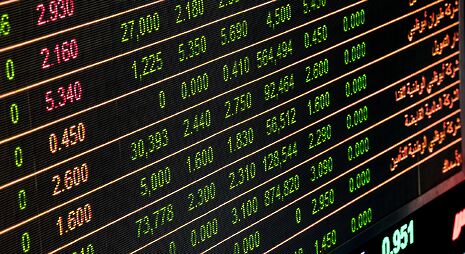Models and meaning: how can we predict the next financial crash?
In conversation with Professor Robert Neild

Since the 2008 financial crash, academics and politicians alike have started to question the principles on which the application of modern day economics rests, asking why models failed to predict such a calamitous event. I spoke to Professor Robert Neild, emeritus professor of Economics at Trinity College, to talk about the practice of modelling and the pitfalls of the economics under which much of our world operates.
Modelling involves looking at the relationships between variables within a system to unveil some new aspect of the system. Neild notes that “so long as the model portrays the real world, you’ll arrive at a conclusion about the real world”. This is however a considerable caveat in much of economics because “if modelling departs from reality and relies on assumptions that are unreal, it will arrive at conclusions that are unreal”. Models are not reality, but try their best to simulate it, applying “simplifying assumptions” in order “to build rigorous models like physics”.
“They’re assumed to be completely atomistic with certain born preferences which they express rationally. Now that’s crazy!”
Professor Robert Neild
It is the neoclassical model that has been taken up by many economists and bankers alike, which Neild refers to as being based on “a Newtonian concept of equilibrium to the effect that through markets, supply and demand is being brought to an equilibrium in every individual market, and in the whole system, to generate full employment”. Modelling as a practice in economics took off in the last half century, becoming a “competitive game … until [the models] became more and more real”. Neild notes that these models, given their assumptions, spouted out the same general conclusion: “that markets are good and you can rely on them”.
Neild notes several flawed assumptions in this model. Economists’ approximation of human behaviour is deeply distorted, where humans are “called ‘agents’ … that are, what the economists call, ‘rational’, which means that their behaviour is purely directed by selfish calculation as to gains and costs”. This goes against much of what is known about the drivers of human actions, ignoring “instincts, which are obviously present, starting with sex and going on” as well as the influences of “advertising or what other people do. They’re assumed to be completely atomistic with certain born preferences which they express rationally. Now that’s crazy!” Additionally, models are assumed to be perfect, meaning sellers and buyers cannot influence prices. Yet “it is manifest that the world consists of very imperfect markets where prices are administered and that large monopolies exist”.
The neoclassical model is a static view of the world: “What’s happened today, how things are behaving, how people are behaving, how technology is providing means of achieving different ends, is going to be the same tomorrow.” Economists seem to have been seduced by the apparent certainty of physics where “you can happily say if I go to the window of my room here and drop and object, it will go down and not up. In economics you can’t be sure like that because you’re dealing with human behaviour.” Yet this static view is “no longer tenable” because the is world changing. “Since the second half the twentieth century, there’s been a huge acceleration in the rate of innovation, not just in the technological sense but in inventions such as financial contracts, how we persuade one another, how we communicate.” Neild suggests that this “snowball of innovation is changing how the economy and society work around us” making “static economics ridiculous”.
The 2008 banking crisis is a poignant example of a failure of this doctrine. Banks innovated in all sorts of ways following their deregulation, allowing them “to invent all sorts of new tricks and games for lending money, in a very risky way, and passing on packages of risky investment to investors, ordinary citizens who didn’t understand their game”. As a result, the crash hit governments and experts by surprise, all so “blinkered by the myopia of static economics that they did not look for innovations to see whether they were good or bad”.
Neild suggests Cambridge’s Economics Department is plagued by this static view, speaking of how the department has changed from when he first arrived. “It used to be a place where the problems of the world were hotly debated, and economics was relevant to policy issues.” He speaks of the “creative chaos” with “all sorts of people of different faith, from Marxist, to capitalist, to Keynsians, to applied economics, to neoclassical mathematical people getting going”. Neild notes that Keynes “was not interested in techniques and mathematics for its own sake, … he was interested in the problem of unemployment, and went hell to leather to try and see what was going on”. Since, economics at Cambridge, suggests Neild, has become “mute and irrelevant”, with neoclassicals taking over, with teaching and admissions becoming very maths heavy. “A considerable part of it, I fear, goes into training people in gambling – they all want to go to the city and make money and be bankers. I regard that as a contemptible action.”
Neild calls for a more dynamic modelling approach, one that looks at “what people are going to do in the face of masses of innovations being thrown at them, … and political events in the world”. Economics, unlike Newtonian physics, does not run like clockwork, and thus must acknowledge its inherent uncertainty. Neild envisages that this dynamic view would involve modellers looking at what’s changed in the world, for example in the case of the financial crash “regulators of the banks [asking] ‘what’s new. What are the bankers getting up to? Should we restrict it? Is it good?’”
How should this dynamic view be applied to modelling? “I think the right approach to be dynamic is to be Darwinian,” with new innovations being analogous to “mutations and recombinations in genes … that’s to say that they’re quite unpredictable. There are going to be millions of mutations that don’t succeed, and then one finds a niche and takes off.” This idea is rooted in the idea of cultural evolution, where ideas or beliefs compete by the same principle of survival of the fittest that Darwin originally proclaimed, suggests Neild. The most recent examples of this involve innovations leading to “enormous monopolies [such as] Amazon, Microsoft or people like this”.
Yet the doctrine of perfect markets and a static world prevails. Established theories are hard to overturn. Neild points to a recent example of this in the “enormous pressures against that in that the whole bias in funding and money is for this mathematical kind of approach, and behind it there is the political bias of the power of the banking lobby, which tends to push people away from being too critical about how the system works … Crude debates of the Tories, saying that ‘Corbyn is anti-capitalist’ and is ‘unqualified’. It’s horrible.” But he has faith in the Darwinian approach overturning this view eventually: “In the end, facts kick”
 Comment / The (Dys)functions of student politics at Cambridge19 January 2026
Comment / The (Dys)functions of student politics at Cambridge19 January 2026 News / Local business in trademark battle with Uni over use of ‘Cambridge’17 January 2026
News / Local business in trademark battle with Uni over use of ‘Cambridge’17 January 2026 Arts / Exploring Cambridge’s modernist architecture20 January 2026
Arts / Exploring Cambridge’s modernist architecture20 January 2026 Features / Exploring Cambridge’s past, present, and future18 January 2026
Features / Exploring Cambridge’s past, present, and future18 January 2026 News / Your Party protesters rally against US action in Venezuela19 January 2026
News / Your Party protesters rally against US action in Venezuela19 January 2026







